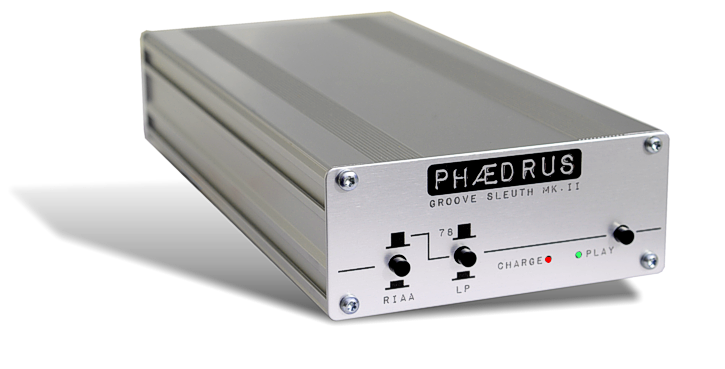 During development of the Stereo Lab software, we searched for hardware solutions with irreproachable performance for recording non-equalised needle-drops.
During development of the Stereo Lab software, we searched for hardware solutions with irreproachable performance for recording non-equalised needle-drops.
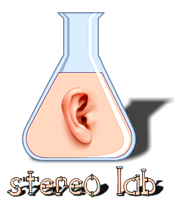
"I thought I would write and tell you how pleased I am with the Groove Sleuth. You have a most excellent product" - Rick Rateick
 During development of the Stereo Lab software, we searched for hardware solutions with irreproachable performance for recording non-equalised needle-drops.
During development of the Stereo Lab software, we searched for hardware solutions with irreproachable performance for recording non-equalised needle-drops.
The resolution of 24-bit recordings requires preamplifiers which guarantee extremely low-noise, exemplary headroom, excellent linearity, and an accurate and extended frequency-response.
Surprisingly few exist!
In fact, in the end, we were forced to develop our own test equipment which we nicknamed, the Groove Sleuth.
Go to Phædrus Audio for descriptions of the commercial realisations of our original laboratory test-set.

Groove Sleuth preamplifiers, in their base build, present the phono cartridge with the correct impedance at the IN phonos and simply amplify the signal. The output is presented on the phonos marked OUT on the rear of the unit. This amplified signal is sent to an external audio interface for digitisation.
Various options may be ordered and fitted to the base-build for: moving-coil cartridges; for monitoring equalisation; and for support of the Phædrus Audio PHLUX active phono cartridge.
The Groove Sleuth is connected to your sound-card's line inputs. Levels should be set on the interface in the normal way and you will find that the Groove Sleuth delivers audio at a sufficiently high level for all commercial sound-cards, both internal and external.
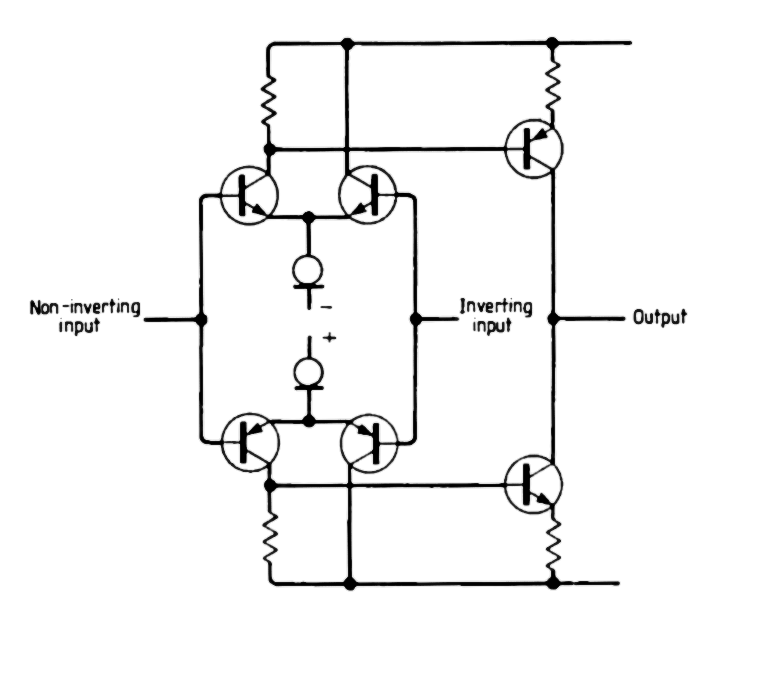
The signal amplification in the Groove Sleuth is designed for the low distortion and noise-floor. In order to best benefit from the on-board, battery supply (see PSU section), the gain-blocks are designed for rail-to-rail operation.
The principal gain-block (red in the block diagram) is a class-A, symmetric amplifier stage (shown simplified right). Gain is set to +33dB. This gain block feeds the OUT phonos.
The RIAA+ equaliser is entirely passive. (See below for more information concerning the RIAA+ option.) When the RIAA+ option is fitted, the output driver stage is a second class-A, symmetrical gain-block.
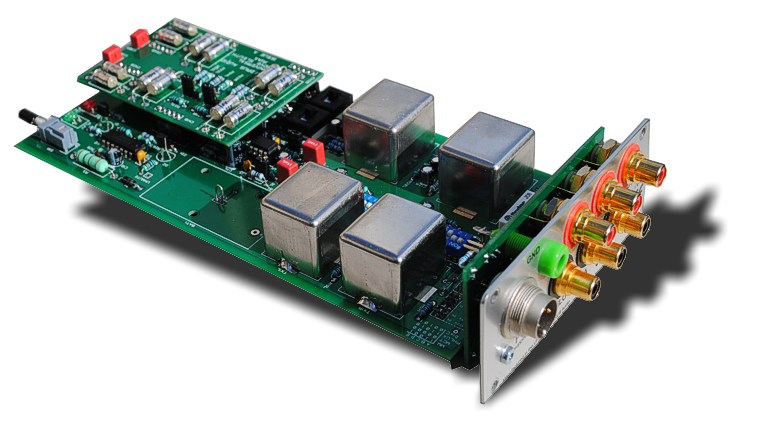
The Groove Sleuth MK. II preamplifier includes step-up transformers when the moving-coil option (MC-INPUT) is ordered.
Transformers offer the lowest possible noise-floor. The selected transformers have cores of a high permeability, nickel-iron alloy and incorporate a Faraday shield between primary and secondary to keep out radio-frequency garbage. In addition, the transformers are used in a unique circuit configuration in which the cartridge is terminated via a tertiary-winding. The transformers are fitted in tight-fitting mu-metal cans and are thus magnetically screened.
The large primary inductance of the transformers ensures an extended low-frequency response (-3dB at <3Hz with a 10Ω source).
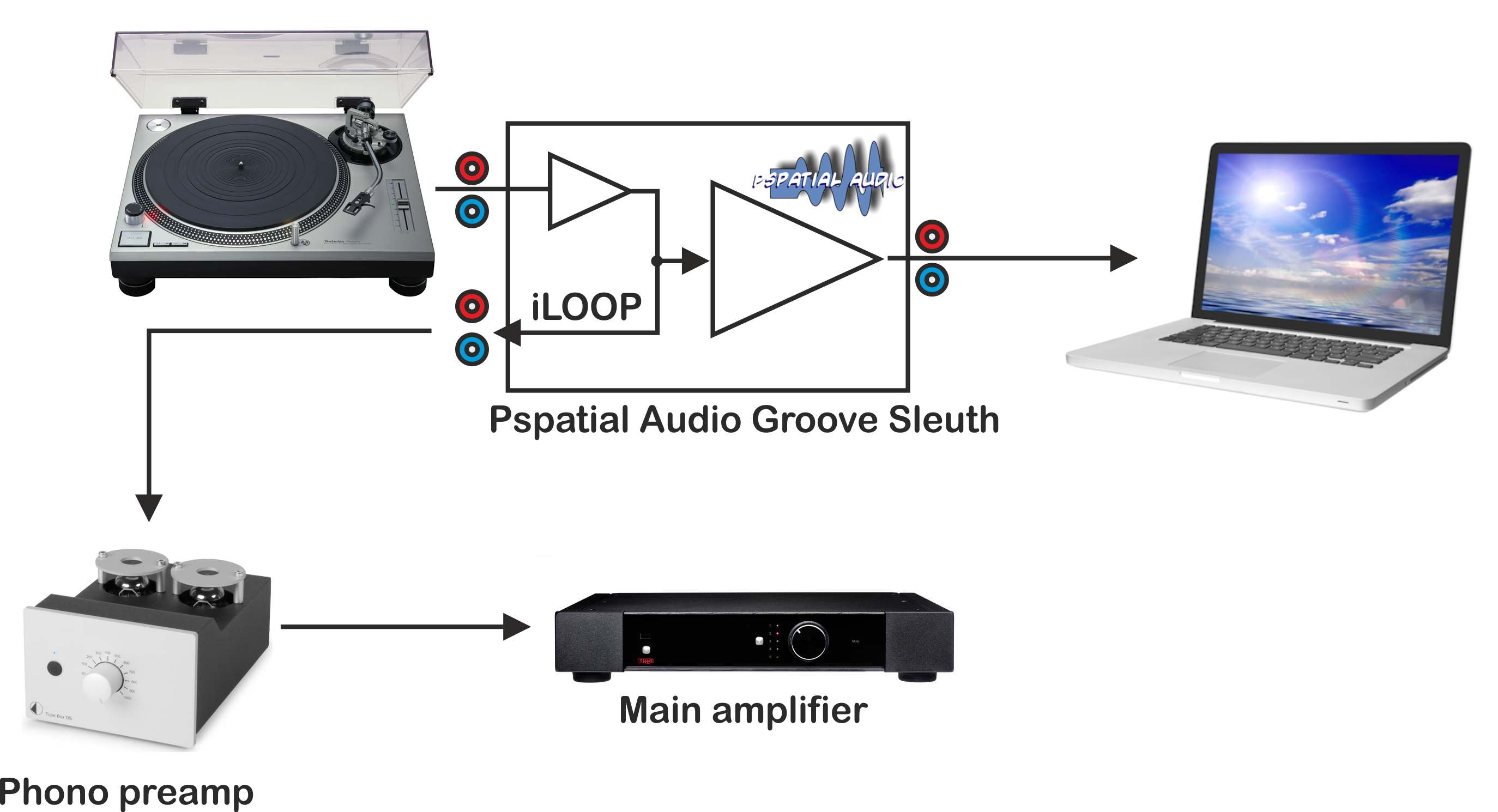
All Groove Sleuth preamplifiers feature the iLOOP; a wide-bandwidth, low-noise and distortion buffered loop-through.
Especially convenient for enthusiasts who already have an excellent LP replay solution but who want to introduce computer audio into their system, because the Groove Sleuth integrates transparently into a pre-existing setup and provides new functionality without upsetting what's already there.
iLOOP always outputs the phono signal at high-output HMC (or MM) signal levels. In fact, if a moving-coil cartridge is used (with MC-INPUT option) the iLOOP output will function as a first-rate, wide-bandwidth, low-noise MC preamplifier.
A high-quality recording-characteristic equalisation stage (option GS-RIAA+) may be included so that the "loop" signal is equalised and emerges at line level on the phonos marked iLOOP/RIAA. (When the RIAA+ option is fitted, it replaces iLOOP.)
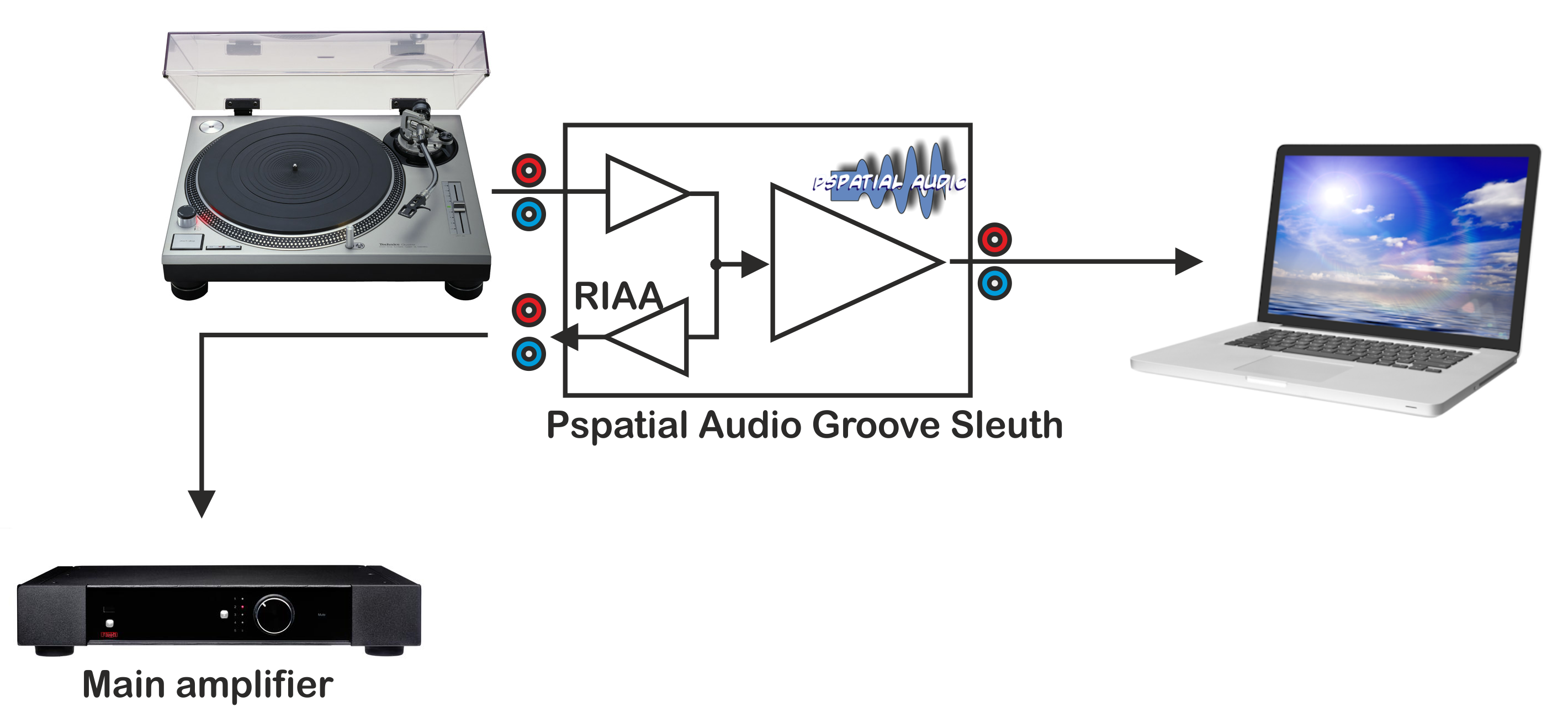
 Because Stereo Lab software has its application in equalising the many recording characteristics of historical recordings, it was felt helpful to incorporate limited, variable equalisation in the hardware preamplifier to make record monitoring less fatiguing (it's hard work listening to a 78RPM equalised with the RIAA curve!)
Because Stereo Lab software has its application in equalising the many recording characteristics of historical recordings, it was felt helpful to incorporate limited, variable equalisation in the hardware preamplifier to make record monitoring less fatiguing (it's hard work listening to a 78RPM equalised with the RIAA curve!)
Three carefully judged generalised settings are included: RIAA, LP (for late 78s and early LPs); and 78 (which is for all records made up until the late 1940s). In this way record monitoring may always be comfortable and accurate.
 The Groove Sleuth Mk.II preamplifier incorporates the very low-noise battery supply. This means the preamplifier can be powered from a conventional, international-style power supply but be switched to battery supply during needle-drops to ensure the very best possible noise and aliasing performance. This innovation enables Phædrus Audio to deliver first-rate quality at a very reasonable price.
The Groove Sleuth Mk.II preamplifier incorporates the very low-noise battery supply. This means the preamplifier can be powered from a conventional, international-style power supply but be switched to battery supply during needle-drops to ensure the very best possible noise and aliasing performance. This innovation enables Phædrus Audio to deliver first-rate quality at a very reasonable price.
A switch on the front-panel allows the battery supply to be selected and a LED indicates battery health and charge.
The Groove Sleuth Mk.II has well over 24 hours operational charge, but we recommend battery play be limited to approximately 12hours. The unit may be kept in charge mode when listening with only a minute loss of quality.
If the unit is unplugged or the power is removed or interrupted, the analogue circuitry is held in a muted state for about 5 seconds until the various bias voltages are stabilised.
The Groove Sleuth preamplifier manual is here.
 Home page
Home page
For all support issues, go here.
For Pspatial Audio sales, email: sales@pspatialaudio.com
